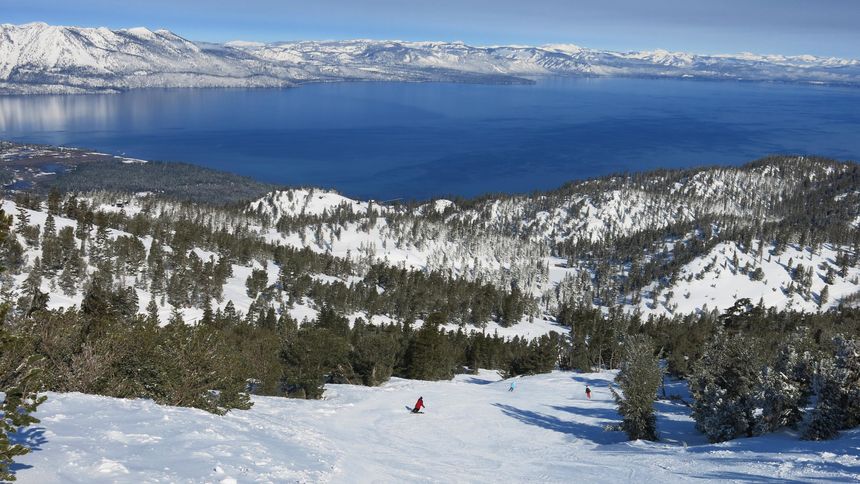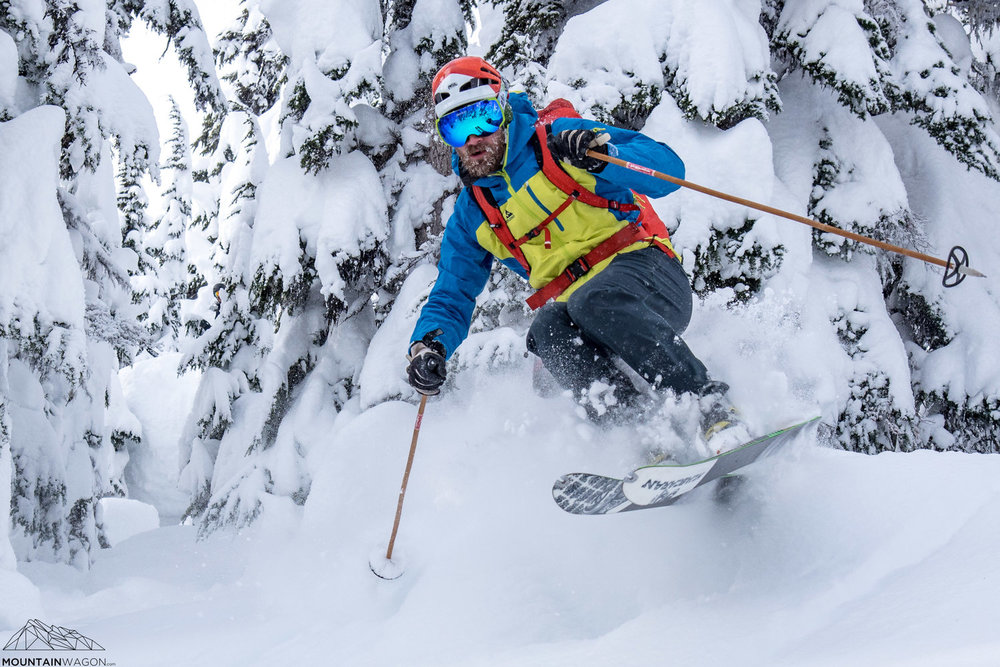
Cross country ski summer can be a great opportunity to practice and perfect your skills for next season. You can try out new terrain, take lessons with a guide, and get the most out of your ski experience this winter.
Cross country skiing is the most popular type of cross-country skiing and it is simple to learn. Start out with an experienced friend, and if you can, find a snow-covered area that has groomed trails for your first few days.
If you don't have access to open space, you might find some trails at your local park. Just be sure to check the weather forecast and bring extra warm clothing.
Skiing requires you to maintain balance and weight control so you don't slip down the slope. To do this, you can place your hands on the knees while going downhill. This helps keep you stable and reduces the possibility of injury when you fall downhill.

To help you downhill ski, your arms can also be used. This is called the "shuffle", which involves moving the pole tips down into snow and activating the core muscles to help you stay upright. After doing this several times, you can switch to the glide. In this case, your arms will be activated as you lift your pole tips into the snow.
Cross country skiing is available in many variations, including skate, classic, and telemark. Each style of cross country skiing requires a unique set of skills to be mastered, so it is important that you understand the differences before starting any new skill.
To improve balance and endurance, beginner skiers should concentrate on a few techniques. This will give them the confidence to progress in their skiing skills.
V1, V2, and V2 Alternate are basic poling movements that can all be used in cross-country skiing. These movements are sometimes included in the training of professionals.
Ski touring cross country is an excellent option for beginner and intermediate skiers looking for a challenge and to increase their overall fitness levels. It is a good alternative to snowshoeing and can be completed in any climate.

You need to practice a lot in order to learn how ski touring works. Ski touring can be learned from a professional coach or instructor, who will show you how to navigate your route, handle your gear and make efficient turns.
You should do some ski touring at least once or twice a week during the cross country ski summer to keep your skills sharp and prepare you for the upcoming ski season. This will not only increase your stamina or strength, but it will also teach you how your skis work more efficiently and improve the performance of your skis.
Ski touring has the best part about it: you can go at your own pace, and take in the beauty of the landscape along the way. This will not just boost your mood but will also keep you safe.
FAQ
What's the first thing you should do when you arrive at your travel destination?
An itinerary is essential for every trip. This will help you plan what to do and where to go next.
It is important to plan ahead so you don't forget anything.
For instance, if your trip to a city lasts more than one hour, research which landmarks, museums, and parks you'd like.
Also, you may want to look into getting a map of the area and reading up on the region's history.
How can I travel light and how do I get there?
There are no right or wrong answers when packing for a vacation. These are some suggestions to help you pick the right items to take on your trip.
-
Only bring what you truly need.
-
Only bring what you plan to actually wear.
-
Do not overpackage yourself with items.
-
Take enough room in your suitcase
-
Always make sure you have everything you need.
-
You can take advantage of our free storage facilities
-
Reusable water bottles are better than bottled water.
-
Carry a backpack instead of using a suitcase.
-
Walking or cycling is a better option than using public transport.
-
Choose the right size bag.
-
Do not carry heavy items.
-
Prepare for anything.
-
Leave nothing behind.
What should I pack for a vacation trip?
You must know what you want from your holiday. You don't just need to pack clothes. You also need to consider where you are going and how long you are staying there.
You need to think about what activities you would like to participate in. You might want to go scuba diving if your destination is exotic. You might also want to participate in local festivals and events if you plan to stay longer.
If you have any health issues, then it is important that you tell the people who will be looking after you so they can plan accordingly.
How can you find affordable accommodations when you travel abroad?
There are many options for affordable accommodation, including hostels and hotels, guest houses, and bed-&-breakfasts.
Hostels can be affordable and have dorm-style rooms that guests share with their bathrooms and living areas.
Hotels are typically located in tourist areas.
Guesthouses are similar to hostels, except they often have larger rooms and fewer people sharing each room.
Budget-conscious travelers are increasingly turning to bed & breakfasts. Guests are able to stay in private homes, and they can enjoy a full-service breakfast.
Statistics
- No Checked Bags: No Alcoholic beverages with more than 70% alcohol (over 140 proof), including grain alcohol and 151 proof rum. (tsa.gov)
- Alcoholic beverages with more than 24% but not more than 70% alcohol are limited in checked bags to 5 liters (1.3 gallons) per passenger and must be in unopened retail packaging. (tsa.gov)
- They're also likely to offer babysitting services, in case you'd like to have dinner one night after 7 p.m. (travelandleisure.com)
- Pack sweaters, jackets, and underwear in reusable compression bags creating up to 75% more space in your luggage. (wikihow.com)
- Case in point: the private island of Ilha Caldeira, less than seven miles off the coast as part of the Primeiras and Segundas Archipelago, is located within the marine-protected area with 20 percent of the country's intact living coral. (travelandleisure.com)
External Links
How To
How to plan your next getaway
Planning a trip can involve many things including booking flights, hotel reservations, car rentals, and activities. You must also consider your budget, destination, weather forecast, and other important factors.
These are the things you should keep in mind as you plan your next vacation.
We have prepared a step-by, step guide to help with your next vacation planning. This guide has been compiled using customer feedback as well as our own experience. We hope that by following this guide, you can plan your next vacation without any hassle.
Steps:
-
Your Budget Plan - It is important to plan your budget before you start planning your trip. Before you can start planning where and what you will do, you must first know how much you are willing to spend. If you don’t have sufficient money, you may have to cancel your travel plans.
-
Book Flights - The first thing you should do after deciding on your budget is book your tickets. Book the best available flight deal at the lowest possible price. Make sure to check for special offers during peak seasons. These deals could be a great way to save money.
-
Choose Your Destination - Once you've booked your ticket, the next thing you'll need to decide is where you'd like to travel. Multiple factors play into the decision of where to go, climate (when you can visit), culture (how friendly they are) and cost (how expensive it is).
-
Find Accommodations - After choosing your destination, the next step would be finding accommodations. Various accommodation options are available, ranging from cheap hostels to luxury suites. Choosing the right type of accommodation depends on your needs and preferences. If you are looking for somewhere close to the center of the city, a hotel might not be the best option. You may prefer quieter areas away from the crowds and a homestay could be better suited for your needs.
-
Select Activities & Attractions - After selecting your accommodation, now is the time to select the activities and attractions you wish to include in your itinerary. Depending upon the length of your stay you have two options: choose just a few activities, or add many more to your itinerary.
-
Plan Your Trip - Once you have decided on the attractions and activities you want to include, you can now plan your itinerary. It is important to stick to a schedule in order for maximum enjoyment of your trip. But, it's possible to enjoy your trip more if your schedule is flexible.
-
You can create an itinerary by creating itineraries. These information can include flights, accommodations, activities and restaurants. You will need to record them all and make a list.
-
Research Online - Do your research online before you travel. Find out what other travelers have to say about different destinations by reading reviews and testimonials. This way, you will be able to plan accordingly.
-
Avoid Overpacking - Too many clothes can make packing a nightmare. Avoid bringing more than three sets of clothes. Wear clothing that is appropriate for the climate you are visiting.
-
Be prepared. Be prepared before you set off on your trip. You don't want your trip to be ruined by searching for vital documents while you're in transit.